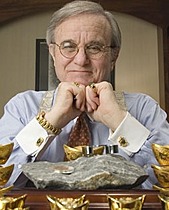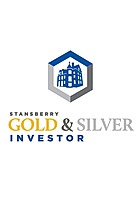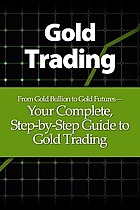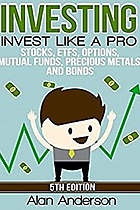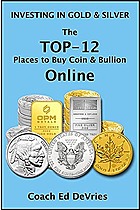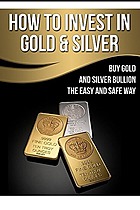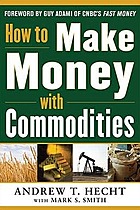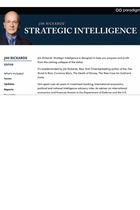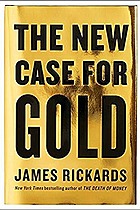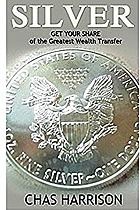
Precious Metals
Precious Metals are rare and naturally-occurring metallic elements that have high economic value due to their scarcity, beauty, and various industrial applications. Traders and investors can buy these rare commodities through several mechanisms, including owning physical bullion or coin, derivatives markets, or precious metals ETFs. While gold is perhaps the most well-known precious metal investment, silver, platinum and palladium are other options investors should know. As an investment, precious metals are often sought after to diversify portfolios and as a store of value, particularly as a hedge against inflation and during times of financial uncertainty.
Experts - People
Adam Baratta
Adrian Day
Andrea Gentilini
Andrew Maguire
Andy Hecht
Andy Schectman
Axel Merk
Ben Davies
Bill Fleckenstein
Bill Shaw
Bob Coleman
Brent Johnson
Brien Lundin
Carlos Sanchez
Charlie McGarraugh
Chris Berry
Chris Powell
Dan Tapiero
David Morgan
David Skarica
David Truffelman
Doug Eberhardt
Doyle Shuler
EB Tucker
Emil Kalinowski
Eric Muschinski
Erik Townsend
Frank Giustra
George Milling-Stanley
Gregory Crouch
Guy Keller
Helima Croft
Jake Weber
James DiGeorgia
James Rasteh
James Turk
Jason Hamlin
Jeff Berwick
Jeff Clark
Jeffrey Christian
Jim Grant
Jim Sinclair
John Doody
John Dwyer
John Embry
John Hathaway
Josh Crumb
Julian Brigden
Justin Huhn
Kathy Derbes
Keith Weiner
Kenneth Ameduri
Kevin Smith
Kirill Zagalsky
Larry Lepard
Lobo Tiggre
Marc Levine
Maria Smirnova
Mark Chalmers
Mark Valek
Mark Yaxley
Matthew Hart
Mike Maloney
Mitch Swergold
Moe Zulfiqar
Nigam Arora
Olivier Garret
Paul Mylchreest
Peter Schiff
Pierre Lassonde
Randy Smallwood
Ray Merriman
Rhona O'Connell
Richard Excell
Ronan Manly
Ross Beaty
Roy Sebag
Sam Sommer
Scott Robertson
Sean Brodrick
Sean Fieler
Slobodan Jovanovic
Stephen Leeb
Steven Hochberg
Tom Denham
Tony Greer
Trevor Hall
PROS OF INVESTING IN PRECIOUS METALS
Safe-Haven Asset. Precious metals, especially gold, are often considered safe-haven assets. Investors may turn to them during times of economic uncertainty, geopolitical tensions, or market volatility.
Diversification. They can serve as a diversification tool in an investment portfolio. Their returns may not always move in sync with other asset classes like stocks and bonds, providing a potential hedge against market downturns.
Inflation Hedge. Precious metals, particularly gold, are commonly seen as a hedge against inflation. When inflation erodes the purchasing power of currencies, the value of Precious metals may rise.
Store of Value. Throughout history, they have been recognized as stores of value. They have intrinsic value and are not subject to the same risks as paper currencies, which can be devalued.
Limited Supply. They are limited in supply, and their extraction is often costly. This scarcity contributes to their perceived value and can potentially support long-term price appreciation.
Industrial Demand. Some precious metals, like silver, have significant industrial applications. Increased demand for these metals in various industries can contribute to their value.
CONS OF INVESTING IN PRECIOUS METALS
Volatility. They can be highly volatile. Price swings can be influenced by factors such as economic data, interest rates, and geopolitical events.
No Income Generation. They do not generate income like dividend-paying stocks or interest-bearing bonds. investors rely on capital appreciation, and holding physical metals incurs storage costs.
Lack of Yield. They do not pay interest or dividends. In a low-interest-rate environment, the opportunity cost of holding non-yielding assets may be higher.
Market Sentiment. They are often influenced by investor sentiment. Changes in market perception, even without fundamental shifts, can lead to rapid price movements.
Currency Risk. They are priced in various currencies. Currency movements, especially a strengthening U.S. dollar, can impact the value of precious metals for investors in other currencies.
Regulatory Risks. Changes in government policies or regulations related to precious metals, such as taxation or restrictions on ownership, can affect their attractiveness as investments.
Storage Costs. Physical ownership of precious metals may involve storage costs. Storing large quantities of gold or other metals securely can add expenses.
FACTORS INFLUENCING PRICES
Supply and Demand. The scarcity of precious metals contributes significantly to their value. Changes in global production, geopolitical events, and mining output affect supply and demand dynamics.
Inflation and Economic Uncertainty. Precious metals, particularly gold, are often seen as a hedge against inflation and economic uncertainty.
Interest Rates. The opportunity cost of holding non-interest-bearing assets like precious metals increases when interest rates rise. Changes in interest rates can impact precious metals prices.
Currency Strength. Precious metals are priced in various currencies. Currency movements, especially the strength or weakness of the U.S. dollar, can influence Precious metals prices.
Central Bank Policies. Actions and statements from central banks, such as monetary policy decisions and gold reserve holdings, can impact the prices of precious metals.









































